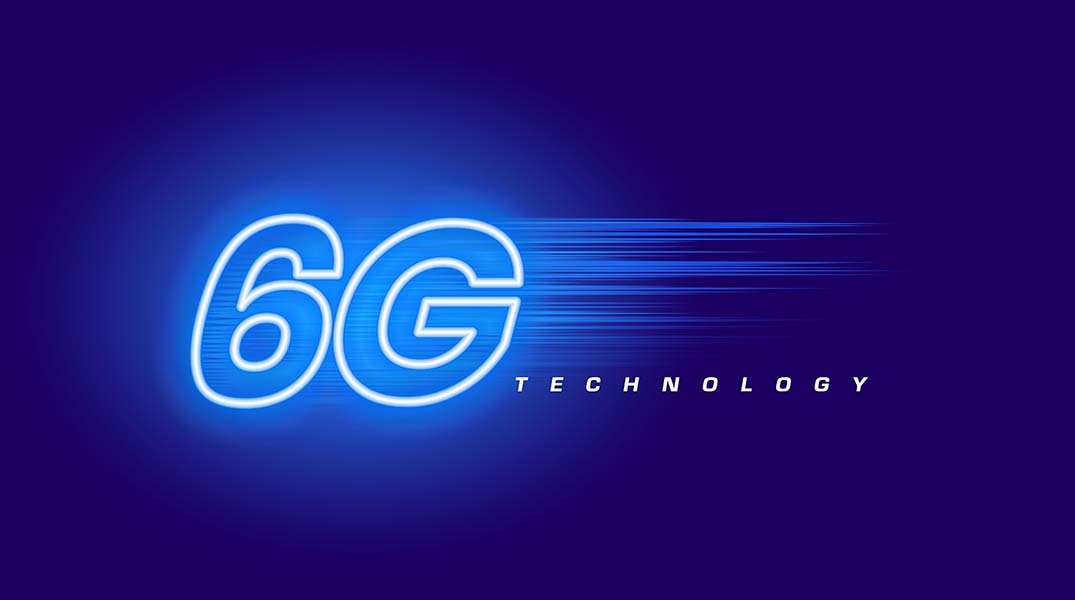As 6G begins to enter the mainstream, telcos are understandably cautious about the new technology’s potential.
6G is beginning to enter standardization as reported by IDTechEx in its new report “6G Market 2026-2036: Technology, Trends, Forecasts, Players”. The company also examines what 6G is, why it it needed, and how it offers to change the game after the somewhat lacklustre performance of its predecessor, 5G.
What is 6G and how is it different to 5G?
The telecom industry deploys new generations of wireless communications roughly every 10 years, with 5G replacing 4G around 2020, and 6G expected to enter commercial use around 2030.
6G will utilise new frequency spectrum to deliver faster data speeds at reduced latency, with industry touting theoretical peak speeds of 1Tbps.
Pushing to higher frequencies brings greater signal attenuation in air, restricting transmission range and introducing line-of-sight considerations.
For this reason, 6G will require a new radio design with new semiconductors to increase link range. Beyond just faster speeds and new spectrum, 6G is expected to leverage new antenna architectures (such as distributed MIMO) and disruptive technologies (such as RIS – Reconfigurable Intelligent Surfaces) to bring greater connectivity throughout urban environments and unlock new applications.
6G is expected to also have more integration with non-terrestrial networks (satellites and high-altitude platforms), beyond relying solely on traditional ground-based masts.
Spectrum under consideration
While formal designation of spectrum for 6G has not yet been finalised, the industry is coalescing around the so-called cmWave (7GHz-15GHz) for the bulk of traffic needs. This region offers a good balance of bandwidth (and therefore speed) without being hamstrung by excessive signal attenuation.
For high-speed applications, mmWave (defined by IDTechEx as 24GHz-100GHz) is being discussed, although mmWave was heavily promoted for 5G and has seen little commercial rollouts (and even some abandoned services) thus far in the 5G rollout.
IDTechEx expects these high-bandwidth services to be restricted to extremely dense areas, such as stadiums and crowded urban zones.
Beyond mmWave, the even higher ‘Sub-THz’ (100GHz-300GHz) band could offer incredible data transfer rates and low-latency communications, but at the cost of enormous signal attenuation, likely requiring some form of network repeaters or RIS to make Sub-THz viable.
Spectrum is a limited resource with many stakeholders competing for its use. 6G is likely to unlock new spectrum for wireless communications, but also refarm previous spectrum bands from legacy generations.
The hunt for killer applications continues
Each successive generation typically brings enhanced performance that unlocks new capabilities. 1G had only analogue voice calls, while 2G introduced SMS. 3G brought internet and video calling for the first time, and was considered so significant that Apple even named its first iPhone to support connection to the network the ‘iPhone 3G’.
4G took connectivity a step further and brought broadband level of speeds to wireless customers, enabling streaming, browsing, gaming, and a plethora of other functions.
However, while 5G was promoted with a similar ‘leap’ in new functionality, in reality, many of the promised applications failed to materialise. The industry now admits that the only big win for 5G was fixed wireless access (FWA), a valuable yet slightly less groundbreaking achievement that allows WiFi services to be provided to a location through a fixed wireless connection.
The entire 6G ecosystem is searching for applications that can be unlocked by 6G and ultimately monetised to provide a return on investment for the capital expenditures required to build out a new network.
Some applications touted for 5G are being promoted once more, such as digital twinning and autonomous driving. Other more novel use-cases such as integrated sensing and communication (ISAC) are being explored, whereby high frequency signals are used to locate and track objects within an area (versus being used to transmit information).
Picture credit: Starline by Freepik

